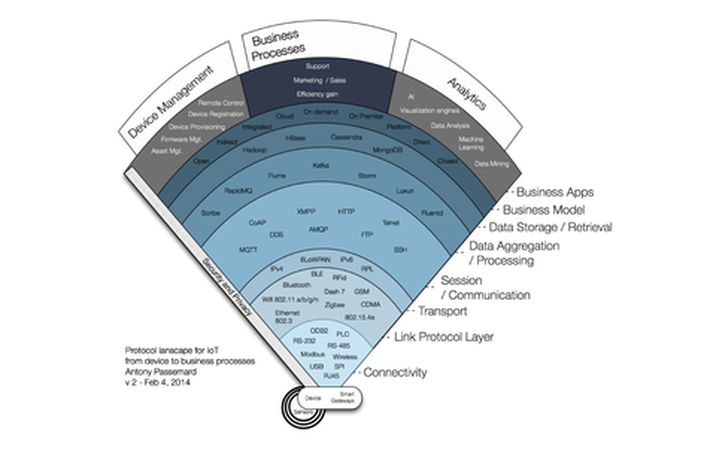
Published on 01/26/2017 | Technology
At the most basic level, the Internet of Things (IoT) is connectivity between people, processes and things. While this is as vast as it sounds — spanning all industries, the enterprise, and consumers — one of the central-most challenges facing IoT is the enablement of seamless interoperability between each connection. This post will explore the challenge interoperability poses to IoT, where we are today, and where we’re headed. Addressing this challenge is essential to unlocking the full potential of the Internet of Things.
By definition, the IoT ecosystem requires interoperability to create the “seamless” programmability of the very devices or sensors that enables the full potential of a connected experience. This means IoT requires standards to enable horizontal platforms that are communicable, operable, and programmable across devices, regardless of make, model, manufacturer, or industry. The vision is that connectivity between people, processes, and things works no matter what screen type, browser, or hardware is used. The reality, however, is that the IoT is fragmented and lacks interoperability; disparate or overlapping solutions can’t easily “talk” (connect) to each other. This fragmentation can manifest as any of the following:
• Different OEMs: devices or equipment that are not made by the same manufacturer can cannot integrate
• Different OSs: inability to run on the same operating systems
• Different versions or times of purchase: devices that weren’t made or purchased at the same time
• Different/incommunicable types of connectors or connectivity frameworks (e.g. devices)
• Different/inconsistent communication protocol standards (i.e. rules)
• Lack of programmability needed to connect in the first place
Adding to the challenge is the disincentive today’s technology “giants” (e.g. Google, Apple, Microsoft, IBM, etc.) have to create interoperability, in which open standards undermine the competitive advantage(s) they are each trying to create. Each of these companies has big dollars and big plans supporting their individual, proprietary operating systems, equipment, and protocols. To build bridges (standards) with other systems inherently lessens their differentiation.
This challenge is underscored because those companies in whom consumers are already invested – such as Google and Apple — are likely to maintain their walled gardens. “We have an Apple Internet of Things and a Google Internet of Things,” explains Rachel Kalmar, Data Scientist at Misfit Wearables. Instead of opening infrastructure horizontally, the giants are only contributing to its fragmentation by creating vertical stacks of integrated products.
Today, every IoT device is installed in its platform and ecosystem: the smartwatch running on the Android operating system cannot interact with the smart lighting system without a proprietary gated app developed by the brand. This is less about Android and iOS and more about the free exchange of information and functionality that would need to occur for IoT to flourish at scale.
While emerging vendors are working towards full interoperability, this remains a challenge for mass consumerization of IoT. Although many “things” can interact with each other today, the reality remains that interoperability in this early phase remains clunky, proprietary, resource-intensive, and largely controlled by vendors. Few tech giants are working together to solve this because it undermines their proprietary assets, namely data and user base. Instead, we’re seeing tech giants corner the market with proprietary solutions (a la Google purchasing smart-home device manufacturer, Nest); a blatant contradiction to interoperability across vendors and brands. So the bad news is that fragmentation in IoT is going to exist for a while.

The good news is that more and more companies and products are beginning to emerge that enable interoperability through open-source development. Third party associations like the IEEE are working with global engineering communities to standardize and facilitate collaboration. M2M platform provider Axeda, for example, is dedicated to a “device agnostic” infrastructure, in which they build their cloud platforms to connect and comply with as many different device standards as possible.
Qualcomm’s “AllJoyn” supports this mission, defining itself as an open source project that provides a universal software framework and set of system services that enable interoperability, creating dynamic proximal networks. It is made up of an open, secure and universal framework and core set of services that enable interoperability across devices, applications, and operating systems. As Sy Choudhury, Sr. Director of Product Management at Qualcomm explains, “We want to make the ease and standard of device connectivity what today is equivalent to having your own URL.”
A technological paradigm or framework without proprietary gates – but with security standards—is hard to imagine today—but so is the seamless connectivity and unprecedented insight IoT promises. Overcoming the challenge of interoperability may be the single most important hurdle for IoT to reach mass adoption, as it is what enables the boundless ‘connections’ of a connected world.